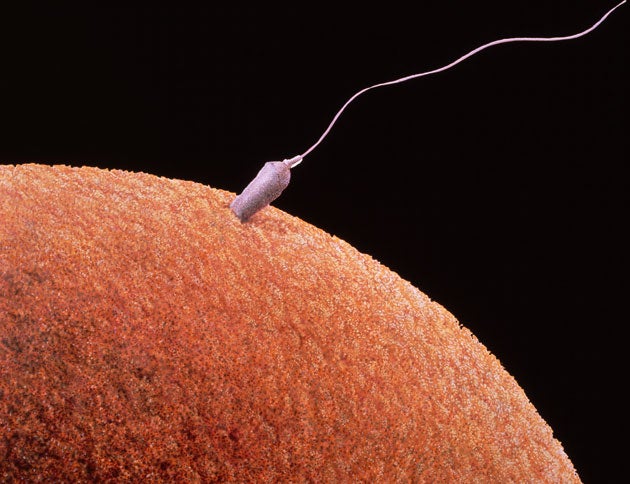Scientist create 'robotic sperm' to help with fertilisation and drug delivery
The sperm's tail acts like a tiny outboard motor inside a metal nanotube; the resulting biobot could be used to deliver drugs and guide sperm to the egg

Your support helps us to tell the story
From reproductive rights to climate change to Big Tech, The Independent is on the ground when the story is developing. Whether it's investigating the financials of Elon Musk's pro-Trump PAC or producing our latest documentary, 'The A Word', which shines a light on the American women fighting for reproductive rights, we know how important it is to parse out the facts from the messaging.
At such a critical moment in US history, we need reporters on the ground. Your donation allows us to keep sending journalists to speak to both sides of the story.
The Independent is trusted by Americans across the entire political spectrum. And unlike many other quality news outlets, we choose not to lock Americans out of our reporting and analysis with paywalls. We believe quality journalism should be available to everyone, paid for by those who can afford it.
Your support makes all the difference.Scientists have created the first ever “sperm-based biobots” by trapping single sperm cells inside metal nanotubes and remotely controlling their direction using magnets.
The resulting biobot (a ‘biological robot’, referring to a bacterium or cell which has been programmed to behave in a certain way) could be put to a range of uses, including delivering drugs to a specific target in the body or fertilising an egg, reports New Scientist.
The experiments have been led by Oliver Schmidt at the Institute for Integrative Nanosciences in Dresden, Germany. Schmidt and his team created magnetic nanotubes 50 microns long by 5 to 8 microns in diameter and dropped these into a fluid containing bull sperm.
The tubes, which are narrower at one end to stop the sperm from escaping, can then be rotated by using magnetic fields. The tail-like flagellum of the sperm cell sticks outside the end of the tube and powers the biobot around the fluid like an outboard motor.
Schmidt told New Scientist's MacGregor Campbell that sperm cells were an attractive option for this sort of work as they do not require an external power source, are harmless to the human body, and are adept at swimming through viscous liquids.
Previous experiments in this vein have focused on controlling bacteria by altering the chemicals in their environment, but Schmidt’s work is the first to directly ‘harness’ a microorganism in this fashion.
A paper outlining his research can be found in Advanced Materials entitled ‘Development of S perm-Flagella Drive Micro-Bio-Robot’.

Join our commenting forum
Join thought-provoking conversations, follow other Independent readers and see their replies
Comments